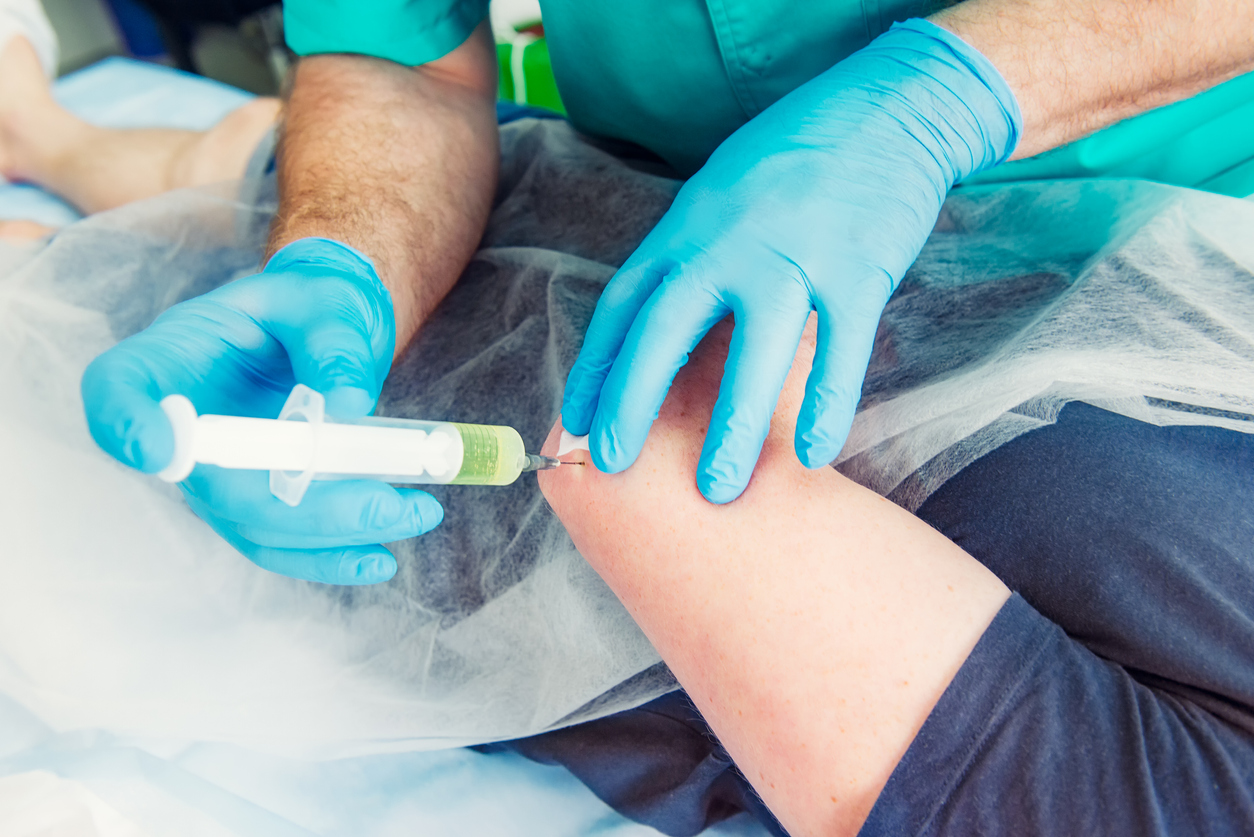
Platelet-rich plasma (PRP) therapy is a regenerative medicine treatment modality that involves drawing a small amount of the patient’s blood, processing it in a centrifuge, then injecting the activated platelets directly into their injured or diseased area. Platelets are tiny blood cells that bind together whenever a blood vessel gets damaged, either due to injury or disease, to initiate clotting, stop the bleeding, and fix the damage.
PRP therapy has been embraced by healthcare professionals across several disciplines due to its remarkable ability to address a wide range of medical conditions. For joint and tendon problems, there is substantial research evidence that underpins the efficacy of PRP therapy in alleviating the symptoms of and even reversing these conditions.
Let’s delve deeper into the beneficial effects of PRP injections on joint pain and tendonitis.
PRP Injections for Joint Pain
PRP injections have become an increasingly popular treatment option for osteoarthritis—one of the most common culprits in joint pain. Experts have touted PRP injections to be more effective than cortisone and hyaluronic acid injections at alleviating knee pain.
In a study published in 2013, patients with osteoarthritis in both knees who received PRP injections experienced significant symptom relief even after six months. Experts ascribe this to the anti-inflammatory properties of platelet-rich plasma and its ability to stimulate the formation of new cartilage and enhance the production of synovial fluid (the lubricating fluid in the joints).
PRP Injections for Tendonitis
Tendonitis refers to the inflammation or irritation of a tendon—the fibrous connective tissue located that attaches muscle to bone. Tendonitis can affect the normal function and movement of a tendon and, like osteoarthritis, can also cause joint pain and stiffness.
There have been studies performed to attempt to establish the beneficial effects of PRP injections on tendonitis, but so far, there hasn’t been enough evidence to support how PRP injections exactly address the condition. Experts have surmised that this is also due to PRP’s anti-inflammatory properties; protein components, which possibly alter a patient’s pain receptors; and ability to stimulate healing and the production of collagen—which is the fundamental component of tendons, ligaments, and other soft tissues in the body.
Orthopedic specialists use PRP injections as an adjunct to other options, such as stem cell therapy, to enhance treatment outcomes for patients suffering from tendonitis and other musculoskeletal conditions and injuries.
PRP Injections in Austin, TX
At All-Star Orthopedics, PRP and stem cell therapies are just two of the many innovative and highly effective treatment methods we use to address the full range of conditions and injuries that affect the musculoskeletal system. We strive to live up to our commitment to providing comprehensive care for the residents of Austin and the surrounding areas.
To learn more about how you can benefit from PRP injections or whether they are right for you, schedule a consultation with our board-certified orthopedic specialist, Dr. Carolyn Hyde, today. Call us at (512) 346-4933 or use our online appointment request form.





